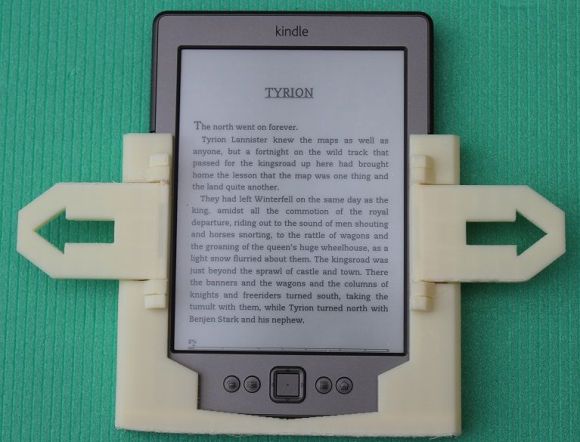
The slim page turn buttons on a Kindle may serve as an elegant, out-of-the-way design for a generation raised with and saturated by technology. For older folks and the disabled, however, those buttons can be a pain. [XenonJohn] fired up his 3D printer to find a solution, building this Kindle page turner. The Kindle slides in from the top while two flappy paddles offer a larger, unmissable target to replace the usual thin page-turn buttons. [XenonJohn] designed the levers to function with only a light touch, and included “bump stops” underneath the levers to absorb excess force from any harsh, accidental smacks.
Construction is simple and straightforward: print pieces, clean pieces, put pieces together. The levers attach via 3D printed hinges, which [XenonJohn] glued to keep in place. The relevant 3D files are available at the link above, and stick around after the break for a quick video of the paddles flipping some pages. [XenonJohn] is no stranger to Hackaday; take a look at his Google Glass alternative, “Beady-i.” Also check out the Frankenkindle, one of the inspirations for [XenonJohn’s] project which required a much more invasive process for getting at the page turning buttons.












